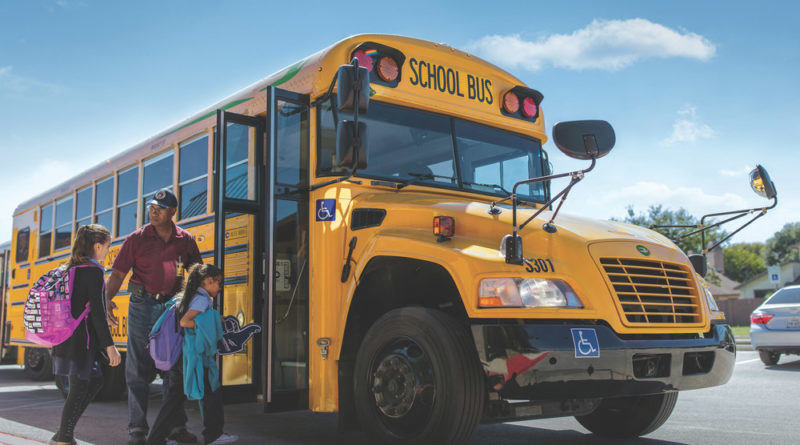Teaching Earth-Friendly Habits
Interest in sustainability and earth-friendly living is driven by a desire to create a better world for our children. Taking personal action and responsibility are part of the solution but teaching earth-friendly habits to the next generation to be environmentally conscious is an important part of the equation, too.
Connecting lessons about sustainability to familiar aspects of your child’s daily life, like school, can makes it easy for him or her to understand and establish earth-friendly habits from a young age. Here are some ideas for promoting sustainable behaviors this school year:
Be smart about supplies. Before restocking your student’s supplies, take inventory of what you have left over from last year. Your student probably had several items with plenty of life left, or things that were bought as backups, so you can avoid waste and save a little money while reducing your consumption of unnecessary goods.
Teaching Earth-Friendly Habits
Model good habits. Kids learn by example, so know they’re watching and internalizing your behaviors. If you’re not already practicing these habits, make an intentional effort to turn lights off before you leave the house each morning, turn off the water while brushing teeth, use alternate energy sources around the house and encourage your school district to adopt sustainable practices, such as propane-powered buses.
Reduce food-based waste. Convenient, single-serve packaging makes assembling school lunches a breeze, but all that extra wrapping is waste that ends up in the landfill. Other options, like buying in bulk and sending treats in reusable plastic bags, is a more earth-friendly approach. Bento-style boxes with compartments for different foods are another option to help make lunchtime more sustainable. Similarly, encourage your child to carry a water bottle at school each day, which reduces water fountain waste (and cuts back on his or her exposure to germs).
Enjoy nature together. As temperatures cool, it’s a terrific opportunity to spend quality time outdoors as a family. Showing your child reasons to appreciate nature can make it easier for him or her to understand and provide motivation to make choices that protect the earth.
Reinforce with reading. Multiple studies reinforce the benefits of reading with and to young students. Selecting books with earth-positive messaging helps them explore new ideas for sustainable living and see how beloved characters embrace values similar to those your family shares.
Safer, Smarter Bus Transportation
The way kids ride to school today is very much the way children traveled to school 25 years ago: in aging diesel school buses. However, diesel school buses are not only expensive to operate, but they pose risks to children’s health, the community and the climate.
Today, there are two main options for clean student transportation: propane and electric. While both can reduce emissions, propane can do it at a fraction of the cost.
Every day, 1.3 million American children ride to school in 22,000 propane-powered school buses. Propane buses are currently in 1,000 school districts in 48 states. That’s only about 5% of the nation’s total buses, but the number is growing. These are some of the reasons more districts are moving to propane-powered transportation:
Student Health and the Environment
The cloud of black smoke that comes from the tailpipe of a diesel bus contains harmful emissions that are classified by the World Health Organization as a carcinogen and are known triggers for issues like asthma, bronchitis and other respiratory problems, according to the Environmental Protection Agency. Propane school buses lower those emissions to near-zero levels, which improves air quality and eliminates concerns about breathing-related issues. In fact, according to a study by Georgia State University, students who ride to school on a low-emissions bus, like propane, had higher test scores than those who rode on diesel buses.
Compared to electric, propane buses provide a lower lifetime carbon option. That includes emissions that take place before the wheels start turning on the road, like charging a bus using the electric grid versus refueling it with propane. Coal and natural gas are still America’s primary sources of energy for electricity generation and drive up emissions.
Cost Savings
Three times less expensive than electric buses, the cost of a propane school bus and its refueling infrastructure is one of the most affordable options for school districts.
School districts can save money throughout the lifetime of propane buses, which cost 30-50% less per mile to operate than diesel, according to the Propane Education & Research Council. What’s more, a World LP Gas Association study found replacing diesel buses with propane buses would save enough money to hire 23,000 new teachers.
Reliability
While electric vehicles make sense for several uses, propane has the fuel range and performance needed for large vehicles that drive long distances without stopping to recharge or refuel. A typical propane school bus can drive more than 2.5 times farther on a full tank than a comparable electric school bus can drive on a full charge.
SOURCE: Family Features Editorial Syndicate, Teaching Earth-Friendly Habits. https://www.prnewswire.com/news-releases/get-smart-about-sustainability-301613839. https://warwickonline.com/stories/get-smart-about-sustainability-tips-for-teaching-kids-earth-friendly-habits,176311?’
https://www.techedmagazine.com/category/news/energy/

